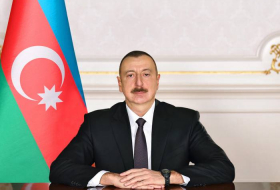But over the years, following reversals of fortune and splitting of inheritances, at least a dozen Nobel gold medals and diplomas have ended up on the auction block.
Yes, it`s the easy way out, as buyers don`t have to have "conferred the greatest benefit on mankind", as stipulated by Swedish scientist and philanthropist Alfred Nobel in his 1895 testament when he created the prizes.
But as any mediator will tell you, peace comes at a price. And surprisingly, it is not always as high as one would think for a Nobel Peace Prize.
The cheapest Nobel ever sold at auction is that of France`s Aristide Briand, honoured in 1926 for his role in France and Germany`s shortlived post-war reconciliation.
His prize went for a steal in 2008 at just 12,200 euros ($13,650 at today`s rate). That of Britain`s William Randal Cremer, who won in 1903, did only slightly better, going under the hammer for $17,000 in 1985.
But that was then.
Auction prices have skyrocketed since, prompting a growing number of laureates or their families to sell their prestigious possessions.
Since early 2014, at least eight Nobel medals have gone up for auction.
"There is a heightened interest in the discoveries and developments of the 20th century and the Nobel prize really symbolises the biggest achievements of the century whether they are in science, economics or whether they`re in peace," explains Francis Wahlgren, the head of Christie`s international book and manuscripts department.
"We now have to consider them among higher value things that we handle," he adds.
Recently several Nobel prizes for physics, chemistry and economics have sold for between $300,000 and $400,000.
Even more lucrative was the 1909 Peace Prize awarded to Belgium`s Auguste Beernaert, which sold for $661,000, and the 1936 Peace Prize to Carlos Saavedra Lamas of Argentina -- found in a pawn shop years earlier -- which went for a staggering $1.16 million.
`Trump of the scientific world`
But it is the field of medicine that holds the top spot for the highest price ever paid for a Nobel medal.
US scientist James Watson, who won the 1962 award for his co-discovery of the structure of DNA, is one of the rare laureates to have sold his prize while still alive.
He cashed in a record $4.76 million for his medal in December 2014 -- more than double the amount the heirs of his co-recipient, Francis Crick of Britain, obtained when they sold his medal just 20 months earlier.
"Watson might have a greater name recognition with people, just because of some of the things he said. He is kind of a controversial nature. He is the Donald Trump of the scientific world," says Wahlgren.
Watson made waves in 2007 when he implied in an interview that Africans were of lower intelligence. His medal was returned to him by the Russian billionaire who bought it, Alisher Usmanov, out of gratitude for his groundbreaking research.
And it seems clear that it pays to be alive: 93-year-old Leon Lederman of the US sold his 1988 physics medal for $765,000 in May.
But sometimes sellers are disappointed.
The family of US author William Faulkner, who won the Nobel Literature Prize in 1949, withdrew his medal from sale in 2013 after it failed to reach the $500,000 the family was hoping to get.
The peace medals are made of 150 grams (5.3 ounces) of 18 carat gold -- up until 1979 it was 23 carats -- and feature the profile of Alfred Nobel on one side and three naked men forming a circle on the other.
The gold itself is worth, at today`s rates, around $5,500.
"It`s a medal whose value you can not put a price on because of its rarity," says Kjell Wessel, the head of the Mint of Norway which makes the peace medal.
"There are always people willing to pay for rare objects. Some have bought Elvis` jacket or things like that for phenomenal sums."
More about:















































